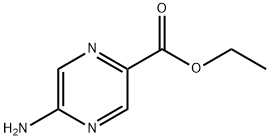On April 14, 2025, an astonishing and concerning incident occurred on Delta Flight 2417. As the plane took off from Atlanta en route to Chicago, a mid - flight emergency unfolded when the ceiling panel in the cabin suddenly collapsed, plunging the passengers into a state of shock and chaos. This unexpected event not only disrupted the flight but also raised serious questions about aircraft safety and maintenance. As we delve into the details, one might wonder: was there an underlying issue with the chemical materials used in the construction of the ceiling panel?
What happened to the ceiling collapse on Delta Flight 2417? Was it a chemical material problem?
Related Encyclopedia
Related Products More >
-
- 9002-86-2
- CNY equest For Quotation
-
- CNY equest For Quotation
-
- CNY equest For Quotation
-
- CNY equest For Quotation
-
- CNY equest For Quotation
-
- 25037-45-0
- CNY 10.0000
- 25kg
-
- 9002-86-2
- CNY 10.0000
- 25kg
-
- 25085-99-8
- USD 490.0000
- 240kg





 沪ICP备2021018848号-5
沪ICP备2021018848号-5

For about 10 to 15 minutes, the trio maintained their grip. Once the flight crew was free to move, they assessed the situation and alerted the pilots. Crew members searched the plane for tape or any material that could secure the panel, but it would be another 30 minutes before a solution arrived.
Interestingly, it was another passenger who saved the day. A man, believed to be an engineer, inspected the panel by balancing on an armrest. His inspection revealed that a missing screw or bolt — a critical fastener — had likely caused the ceiling structure to fail. Without a proper fastener, the panel had nothing to anchor it securely to the ceiling frame.
The remedy came in an unexpected form: bright yellow scotch tape. Another passenger happened to have it in his possession, and flight attendants, with assistance from passengers, used it to tape the loose panel back into place. Although hardly a permanent fix, the patchwork job was sufficient to stabilize the situation until the plane could safely return to Atlanta.
The crew and passengers handled the incident with remarkable calm. Flight attendants offered complimentary drinks as a thank-you to those involved, though, as Witschy humorously noted, "It’s 10 a.m., we’re okay." For their efforts, Delta later awarded the affected passengers 10,000 frequent flyer miles each. However, Witschy still filed for a refund, citing lost wages from a missed workday — though, as of his interview, he had yet to receive a reply from Delta.
Delta Airlines later confirmed that Flight 2417, operated by a Boeing 717 aircraft, returned to Atlanta due to “cabin maintenance issues.” They emphasized that no injuries occurred and that passengers were accommodated on another flight roughly two hours later.
Yet beyond the surface details, the incident prompts important questions about aircraft maintenance and materials. Ceiling panels inside modern aircraft are typically constructed from lightweight, durable materials such as polycarbonate, fiberglass-reinforced plastic (FRP), or composite laminates. Chemical compounds like polycarbonate (C₁₆H₁₄O₃), epoxy resin (C₂₁H₂₅ClO₅), and polyvinyl chloride (C₂H₃Cl) are commonly used in the production of these panels.
If the failure was solely due to a missing screw, it would likely be categorized as a mechanical oversight or maintenance error. However, if the panel itself had degraded — perhaps from exposure to fluctuating temperatures, UV radiation, or improper chemical treatment — it could signal a material fatigue problem. In such cases, chemical degradation like polymer embrittlement or resin delamination could weaken components over time.
This possibility invites a broader discussion on aircraft inspection standards, especially for aging planes such as many Boeing 717s, which have been in service for decades. How often are interior components inspected for signs of chemical wear? Could the adhesives, plastics, or resins themselves fail unexpectedly, even if fasteners are secure?
The Federal Aviation Administration (FAA) requires regular inspections, but not every panel or interior component is scrutinized as thoroughly as critical structural elements. This incident highlights the need for airlines to revisit inspection protocols, ensuring that even seemingly minor interior components remain airworthy.
Passengers on Flight 2417 were lucky: no one was injured, and the emergency was handled without panic. But it also serves as a cautionary tale about how small maintenance lapses or hidden material flaws can quickly escalate into serious in-flight problems.
Witschy and two other men quickly reacted to prevent the panel from causing more damage. They held up the heavy panel, their arms straining, as the plane continued to ascend. Since the flight crew was required to remain seated during the ascent, the passengers had to bear the weight for 10 to 15 minutes until the flight attendants could finally come to investigate. Even after the attendants arrived, the situation did not improve immediately. They had to alert the pilots and search for tape to secure the panel, and during this time, the passengers continued to hold the panel up for another 30 minutes or so.
A fellow passenger, an engineer, then took matters into his own hands. He balanced on an armrest to examine the ceiling panel and determined that a screw or bolt was missing from the corner directly above the woman in the front row. This missing fastener was the likely cause of the panel's instability. Eventually, a man on the plane provided bright yellow scotch tape, and the flight attendants, along with several passengers, used it to tape the panel back in place. In total, the passengers held up the panel for an estimated 30 to 45 minutes before the makeshift repair was completed.
The aircraft involved in this incident was a Boeing 717. In aircraft construction, ceiling panels are typically made of composite materials. These composites often consist of a honeycomb core, such as Nomex made from aramid fiber paper, sandwiched between thin face sheets. The face sheets are usually made of glass - phenolic prepreg for most ceilings. Phenolic resin, a key component in the face sheets, is a thermosetting polymer. It is known for its high heat resistance and dimensional stability, which are crucial properties for aircraft interiors. However, if there were an issue with the curing process of the phenolic resin during manufacturing, it could potentially lead to a weaker bond between the different layers of the panel.
Another aspect to consider is the fasteners used to secure the panel. These are usually made of metal alloys, which might contain elements like steel (iron with carbon and other alloying elements). If the metal used in the screws or bolts was of poor quality or had been corroded over time, it could have led to the fastener failing and the panel coming loose.
Delta Airlines, in response to the incident, thanked the passengers for their patience and cooperation. The airline stated that the plane returned to Atlanta due to cabin maintenance and that the flight continued on another aircraft with about a two - hour delay.
No injuries were reported, but the incident has left passengers shaken and the public questioning the safety of aircraft. As investigations continue, one can't help but wonder: was the ceiling collapse on Delta Flight 2417 a result of a simple mechanical failure, or were there underlying issues with the chemical materials used in the construction of the ceiling panel and its fasteners?
Witschy and other passengers quickly sprang into action. He grabbed the corner closest to him to prevent it from hitting their row as the plane was still ascending. Other men across from him and diagonally across also held on. They continued to hold the panel for 10 to 15 minutes until the flight attendants could come up from their seats to investigate. During this time, the flight attendants were unable to assist much as everyone was seated for take - off.
After the flight attendants alerted the pilots and searched their inventory for tape, it took another 30 minutes or so. An engineer among the passengers then stood on an armrest to investigate the ceiling panel. He determined that a missing screw or bolt was causing the problem, and without the tape, the panel wouldn't stay in place.
One of the flight attendants finally found a man who had bright yellow Scotch tape, which was used to tape up the panel. Witschy estimated that they held up the panel with their hands for 30 to 45 minutes before the tape arrived. The flight attendants were very nice, offering free drinks, but the passengers were more focused on the situation at hand. The flight eventually returned to Atlanta, even though they were closer to Chicago Midway.
The incident has left many wondering what went wrong. Could it have been a chemical material problem? The ceiling panel is likely made of materials such as polycarbonate (PC), which is known for its high impact resistance and transparency. However, if there were issues with the chemical composition during manufacturing, like improper mixing of additives or impurities, it could lead to a weakening of the material over time. Another possibility is polyurethane (PU), which is often used in insulation and adhesives. A problem with the curing process of the polyurethane could cause the panel to become loose or detached.
The epoxy resin used in some of the adhesives or coatings on the panel could also be a culprit. If the epoxy resin didn't cure properly or was exposed to harsh conditions during the flight, it could have led to a failure in holding the panel in place. Additionally, polyvinyl chloride (PVC), which is sometimes used in the lining of aircraft panels for its flexibility and durability, could have had issues if it was damaged or degraded.
In a statement, Delta apologized for the delay and thanked customers for their patience and cooperation. They said the plane was a Boeing 717 aircraft that returned to Atlanta due to cabin maintenance and continued on another aircraft with about a two - hour delay. There were no injuries.
This incident has raised concerns about the safety and quality control of aircraft components. Passengers expect their flights to be safe, and a mid - air ceiling collapse is certainly not what they anticipate. It remains to be seen whether this was an isolated incident or if there are broader issues with the materials used in aircraft construction. As the investigation continues, one thing is clear: the aviation industry needs to ensure that all materials used in aircraft are of the highest quality and undergo rigorous testing to prevent such incidents from happening again.